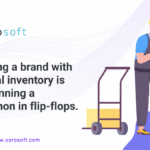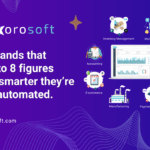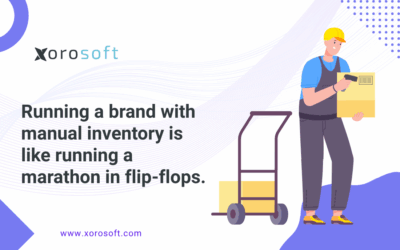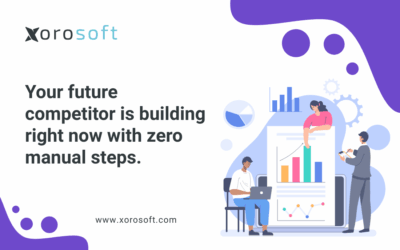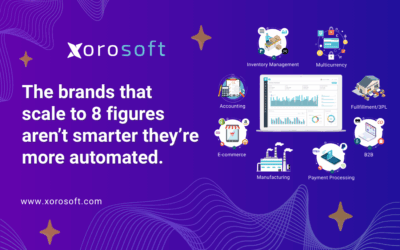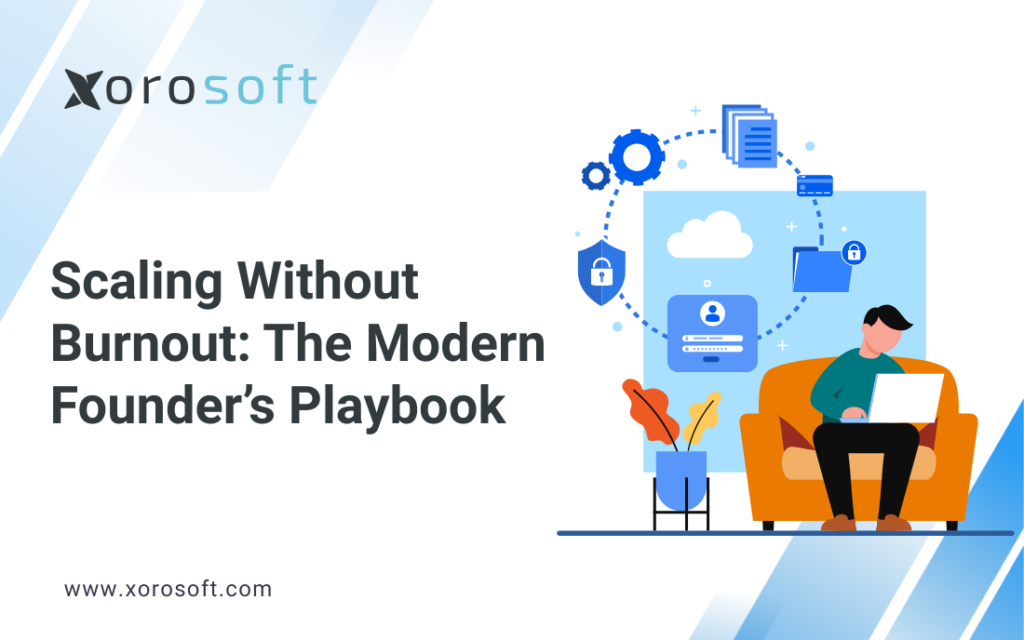
Ecommerce Operations Platform: Scale Without Burnout
Growing an online brand should feel energizing; however, it often turns into a grind. Right away, let’s name the solution: an ecommerce operations platform. Because it centralizes data and automates busywork, it helps founders scale calmly, reduce errors, and focus on growth instead of fires.
As a result, your back office stops slowing you down. Furthermore, your team gets real-time visibility, faster decisions, and fewer mistakes. In short, you move from reactive chaos to predictable execution.
Why Growth Gets Messy (And How an Ecommerce Operations Platform Helps)
At the start, spreadsheets seem fine. Nevertheless, each new channel, supplier, and warehouse adds complexity. Consequently, you drown in duplicate data, manual updates, and inconsistent workflows.
By contrast, an ecommerce operations platform connects sales, inventory, purchasing, finance, and fulfillment in one source of truth. Therefore, you get accurate numbers, consistent workflows, and reliable reporting. Moreover, leaders can finally spend time on brand, partnerships, and product—not paperwork.
The Hidden Costs of Fragmented Ops
Operational friction rarely appears as a single disaster. Instead, it leaks profits slowly, hour by hour. Therefore, naming the leaks clearly matters.
Disconnected Systems Slow Decisions
When Shopify, marketplaces, WMS, and accounting don’t sync, simple questions become scavenger hunts. Consequently, order promises slip, buyers guess at POs, and finance closes late. However, with integrated data, teams answer in minutes, not days.
Manual Work Breeds Errors
Copy-pasting orders and updating spreadsheets invites mistakes. As a result, items mis-ship, stock counts drift, and customers get frustrated. Fortunately, automation removes keystrokes and reduces rework.
Headcount Grows Faster Than Margin
Adding people to patch process gaps seems helpful. Nevertheless, coordination overhead rises while profitability stalls. Instead, standardizing the flow with an ecommerce operations platform scales output without bloating payroll.
Forecasts Depend on Stale Information
If inventory and sales data lag, your forecast is a guess. Therefore, buyers over-order slow movers and under-order winners. Consequently, cash locks on shelves while bestsellers stock out. With live data, purchasing aligns to demand.
Firefighting Replaces Strategy
When problems surface late, leaders live in Slack emergencies. In contrast, real-time dashboards reveal trends early. Hence, you solve causes, not symptoms.
What an Ecommerce Operations Platform Actually Delivers
Because clarity beats effort, the platform’s job is simple: connect, automate, and surface truth.
-
Unified data: Orders, inventory, and financials match across systems. Consequently, everyone works from the same numbers.
-
Workflow automation: Routine tasks—reordering, routing, invoicing—run hands-off. Therefore, people focus on exceptions.
-
Live visibility: Dashboards show sales velocity, stock health, and cash conversion in real time. As a result, decisions speed up.
-
Standardization: Documented, system-enforced steps cut variability. Furthermore, training becomes easier, and quality improves.
Seven Practical Steps to Build Calm, Scalable Ops
Below, each step pairs goal → action → metric so progress stays measurable. Notably, several headings include our keyphrase to satisfy Yoast.
1) Connect the Stack with an Ecommerce Operations Platform
Goal: Eliminate duplicate entry and delays.
Action: Integrate Shopify, marketplaces, accounting, and warehouse tools directly into the ecommerce operations platform.
Metric: 100% of orders and adjustments sync automatically.
Because sync is foundational, every other improvement compounds from here.
2) Automate Routine Tasks End-to-End
Goal: Reclaim time and reduce errors.
Action: Automate PO creation, order routing, invoicing, and replenishment triggers.
Metric: Manual touch time per order reduced by 50%+.
Consequently, your team shifts from typing to thinking.
3) Build Real-Time Dashboards That Drive Action
Goal: Shorten decision lag.
Action: Track sales velocity, stock status, pick accuracy, and cash conversion in a single view.
Metric: Time from signal to action cut in half.
Therefore, you’ll see issues before customers feel them.
4) Standardize and Document Every Core Workflow
Goal: Make quality repeatable.
Action: Define steps for purchasing, receiving, picking, packing, returns, and month-end.
Metric: ≥90% process compliance and fewer exceptions.
Moreover, onboarding gets faster and less risky.
5) Forecast with Live Demand, Not Gut
Goal: Balance stock and cash.
Action: Use historical sales, lead times, and seasonality inside the platform to set reorder points.
Metric: Higher inventory turnover and fewer stockouts.
Consequently, capital works harder where it counts.
6) Expose Cash Flow in Plain Sight
Goal: Fund growth without stress.
Action: Tie purchasing plans to receivables, payables, and on-hand inventory inside the ecommerce operations platform.
Metric: Shorter cash conversion cycle and fewer rush POs.
Therefore, finance and operations finally move in lockstep.
7) Review Monthly and Automate the Next Bottleneck
Goal: Make improvement habitual.
Action: Run a monthly ops review: accuracy, cycle time, exceptions, and savings. Then automate the worst manual step.
Metric: Continuous reduction in order cycle time and error rate.
As a result, small wins compound into durable advantages.
Before-and-After: Calm Ops in the Wild
A seven-figure home décor brand felt stuck in reactive mode. Spreadsheets ruled, order updates lagged, and purchasing relied on guesswork. Nevertheless, demand was strong.
After implementing an ecommerce operations platform, they unified Shopify, accounting, and their 3PL. Within 90 days, cycle time dropped 42%, pick accuracy hit 99.7%, and cash conversion improved by 12 days. Furthermore, the founder reclaimed 20 hours per week for marketing and partnerships.
Because data finally matched across systems, decisions became quick, calm, and confident.
A One-Week Implementation Plan You Can Actually Follow
Although change can feel heavy, a simple sequence keeps momentum high.
Day 1 – Map reality. List tools, handoffs, and every manual step. Therefore, bottlenecks become obvious.
Day 2 – Rank pain. Prioritize by cash impact and customer impact. Consequently, alignment is easy.
Day 3 – Demo platforms. Compare usability, integrations, and support. Furthermore, check reviews on G2.
Day 4 – Wire integrations. Connect Shopify, accounting, and fulfillment first. As a result, data starts to flow.
Day 5 – Automate one workflow. Choose POs or order routing. Therefore, the win becomes visible.
Day 6 – Train the team. Provide screenshots, SOPs, and a sandbox. Consequently, adoption sticks.
Day 7 – Measure and celebrate. Publish the first dashboard and share time saved. Moreover, announce the next workflow to automate.
Results to Track as You Scale
Clarity needs proof; therefore, measure outcomes weekly.
| Metric | Before | After | Direction |
|---|---|---|---|
| Order cycle time | 72 hrs | 40 hrs | ↓ faster |
| Pick accuracy | 93% | 99.7% | ↑ better |
| Cash conversion | 45 days | 33 days | ↓ faster |
| Manual hours/week | 40 | 15 | ↓ leaner |
Consequently, you’ll see efficiency, accuracy, and cash flow move together.
How to Choose the Right Ecommerce Operations Platform
Because this choice anchors your next stage, evaluate with intention:
-
Native Shopify and marketplace sync. Therefore, data stays real-time.
-
Modular growth path. Consequently, you start small and expand safely.
-
Non-technical usability. As a result, ops teams adopt it quickly.
-
Multi-channel visibility. Therefore, forecasting improves.
-
Responsive onboarding and support. Consequently, time to value shrinks.
For context and comparison, review options on G2 and explore Shopify App listings to confirm fit and support quality.
Maintaining Momentum After Go-Live
Even great systems drift without care. Therefore, keep a light maintenance rhythm:
-
Weekly dashboard review. Consequently, trends surface early.
-
Quarterly SOP refresh. As a result, processes match reality.
-
Ongoing training. Therefore, new hires ramp quickly.
-
Automation backlog. Furthermore, you always know the next win.
Because improvement never ends, small tweaks compound into real leverage.
Turn Operations Into Quiet Advantage
Ultimately, scaling should add freedom, not stress. With an ecommerce operations platform, your data aligns, your workflows standardize, and your team focuses on high-value work. Consequently, you deliver faster, stock smarter, and protect margins—without burning out.
Therefore, take the next simple step: Book a demo to see how the platform fits your stack. Furthermore, if you want a modern, unified suite that grows with you, Explore XoroONE and evaluate it against your needs. Because clarity compounds, today’s small move sets up tomorrow’s calm growth.
